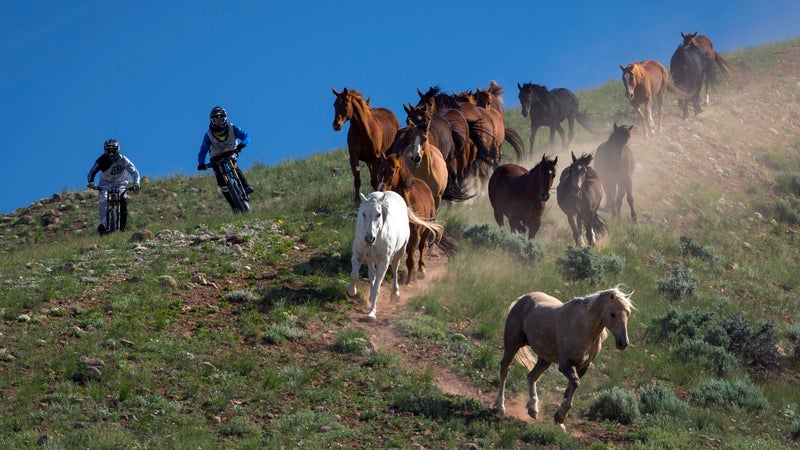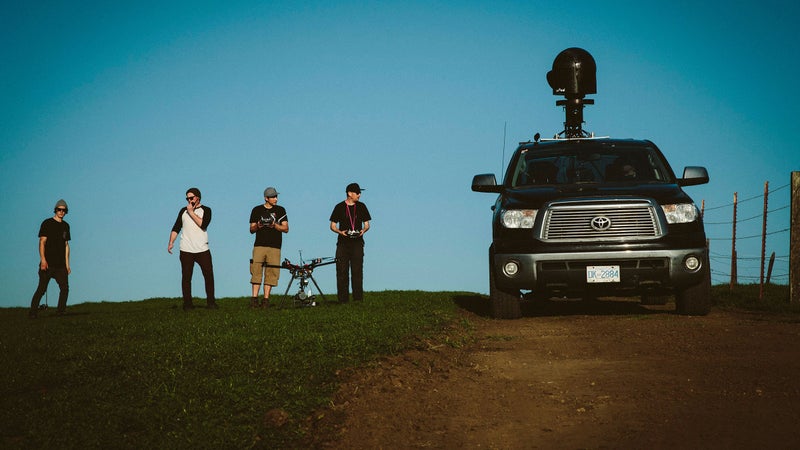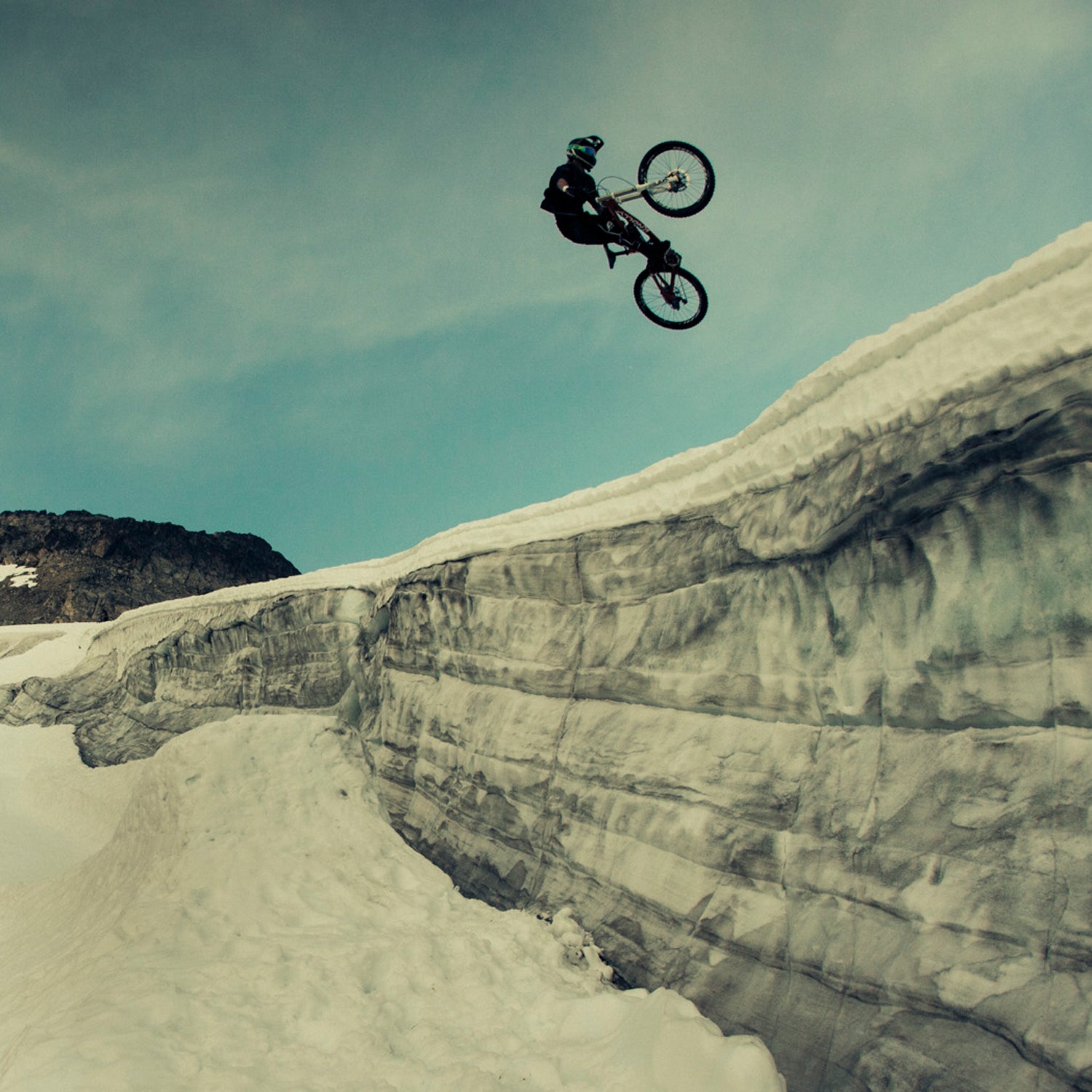There’s an old cliché in action sports about pushing boundaries and going beyond. The word “progression” gets thrown around a lot as everyone tries to outdo each other. In the new mountain bike film���ܲԸ��, produced by in partnership with , the filmmakers set out to go big, but also wanted to have some fun with that cliché.
“The whole idea was to step outside the boundaries of reality,” says Anthill Films’ Darcy Wittenburg, co-producer and director of “We started to joke around with the idea of 'What if we did go one step past reality?' A bear chasing you in the forest, a dirt blizzard, riding on a glacier—these things started as jokes and then we were like, ‘We could actually make that happen.’”
The film, which was created over two years, debuted in Vancouver in June and was released on iTunes this month. This was the first time Anthill Films, known for mountain bike movies, and TGR, known for ski and snowboard films, have teamed up on a project.
With TGR managing sponsorship, marketing, and distribution and Anthill handing the creative, the film had about twice the budget of a usual Anthill movie. “That money enabled us to do things like having horses and bears in our film, which are very expensive to pull off,” says Wittenburg.
Making this film required more than just money. It also required hard work and a lot of luck. To get sliding shots of a biker riding through a forest, Wittenburg used an arborist’s tree-climbing kit to scale trees and set up remote cameras on wire cables. For a scene shot in Wyoming, they had to get a herd of horses to cooperate with mountain bikers and cameramen.

For another scene, shot on the Pemberton Icefield outside of Whistler, British Columbia, the crew spent 16 days camping on a glacier and traveling around on snowmobiles. The glacier melted seven feet during the two weeks they were there and crevasses opened up in their camp. The athletes—Graham Agassiz, Cam McCaul, and James Doerfling—had to drill about 300 tiny screws into each mountain bike tire in order to ride down sheer faces of ice and snow. “Once they started spinning, it was like tiny razor blades,” says Wittenburg.
Then there’s the segment with the grizzly bear, seen chasing mountain biker Tom van Steenbergen through the woods of British Columbia. The filmmakers searched online for trained grizzly bears in the Vancouver area, and they found a company that manages wild animals for film projects.
It took a few weeks to teach the bear to run behind a biker, but eventually they got the shot with help from a trainer dangling a piece of salmon off a stick just out of the camera’s frame. “Tom had one job to do: Stay ahead of the bear,” says Wittenburg.
A segment shot on a cattle ranch in Cambria, California, has generated buzz for its innovative camera work. Called One Shot, the segment was released online this week and featured 24-year-old Canadian mountain biker Brandon Semenuk flowing down a continuous track, speeding through twisting burns and throwing backflips and other tricks off massive kickers.

The sequence has no editing or cuts and was captured with a single Red Epic camera mounted on a located in the bed of a truck that drove a road paralleling the dirt track. In addition to dealing with wind that threw Semenuk off course, a hand injury Semenuk was barely recovering from, and other logistical issues, they also had to deal with, uh, cows. The rancher’s animals broke through fencing and trampled part of the track midway through the weeklong shoot.
“So many things had to line up all at once to make it work,” says Semenuk, who started the track on a slopestyle mountain bike, then switched to a downhill bike halfway through. “Plus, there was the pressure of a short timeline. We were numbered with the days we had the camera. We ended up getting the shot on the very last day.”
The end result? A film that succeeds in bluring the line between reality and fantasy. “Each thing we did in the film was the first time we’d ever done it,” says Wittenburg. “The movie went on that way. When we were working with the horses, we were thinking, ‘That was the most difficult thing we’ve ever done.’ Then we got on the glacier and we were like, ‘Well, this is even crazier.’”


